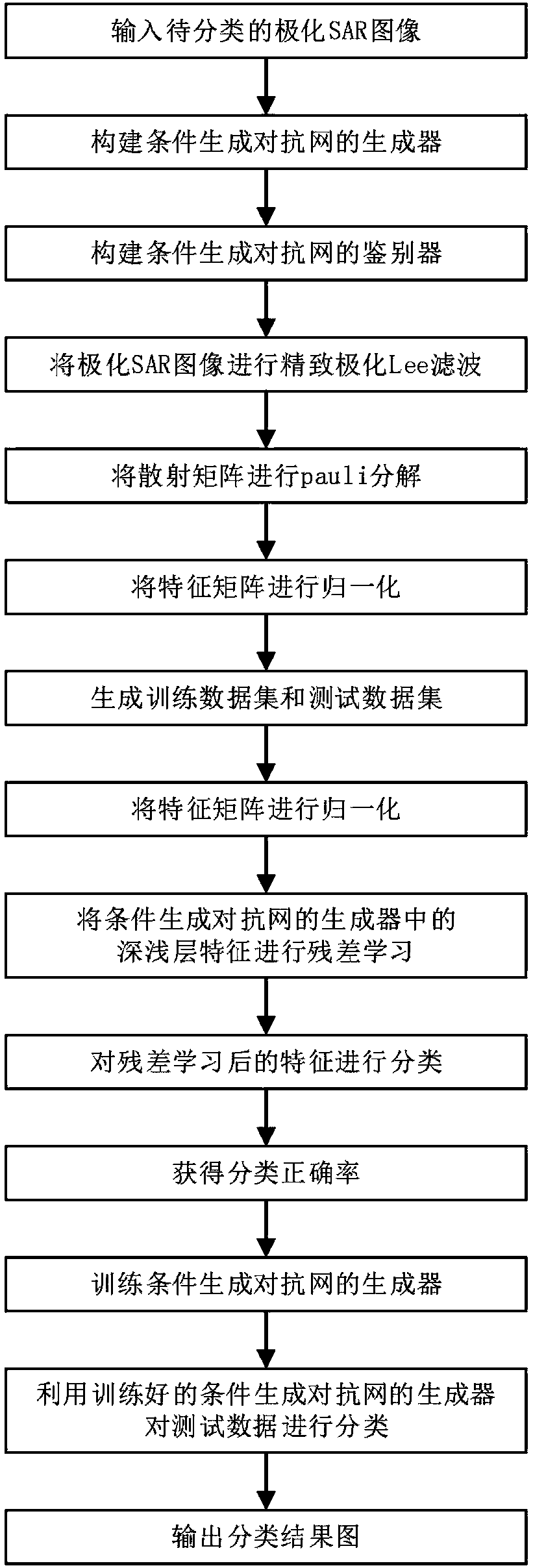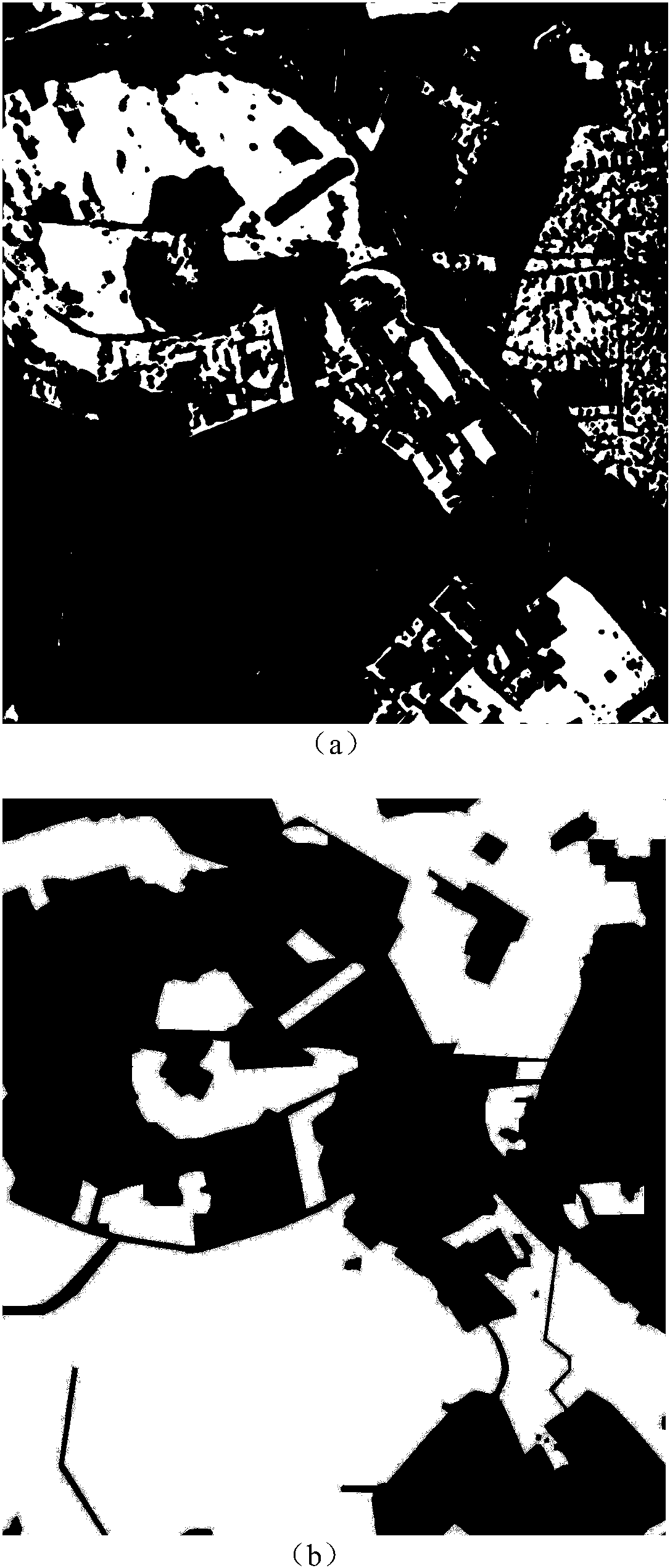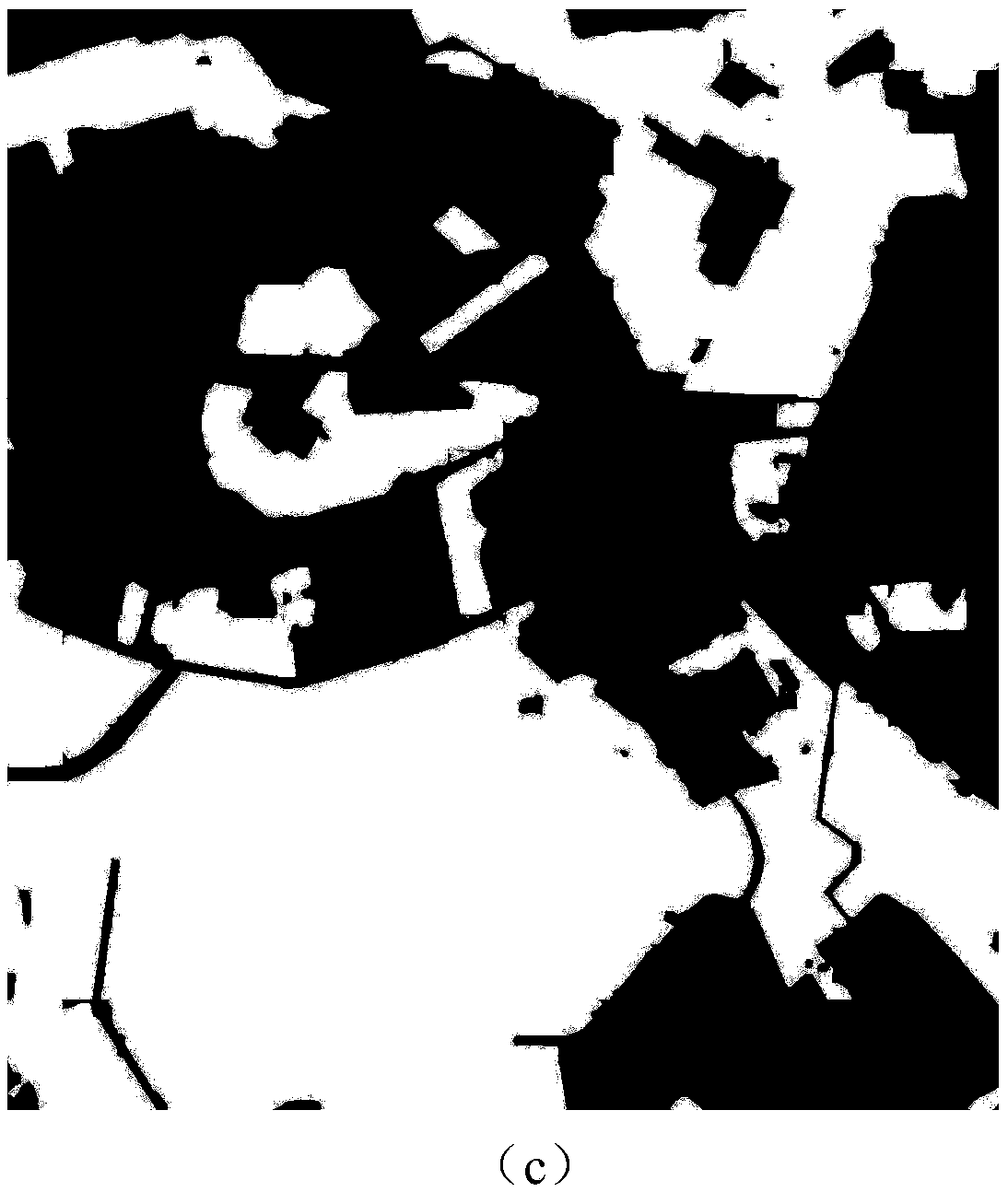Polarimetric SAR image classification method based on residual learning and conditional GAN
A residual and image technology, applied in the field of polarimetric synthetic aperture radar SAR image classification, can solve the problems of incomplete context information of slice features, poor regional consistency, and loss of shallow features, etc., to achieve good regional consistency and improve Classification accuracy and the effect of reducing small image spots
- Summary
- Abstract
- Description
- Claims
- Application Information
AI Technical Summary
Problems solved by technology
Method used
Image
Examples
Embodiment Construction
[0047] The present invention will be described in further detail below in conjunction with the accompanying drawings.
[0048] refer to figure 1 , to further describe in detail the implementation steps of the present invention.
[0049] Step 1. Construct the generator of conditional generative adversarial network GAN.
[0050] Build a 29-layer conditional generation against the network GAN generator, its structure is: input layer → first convolutional layer → second convolutional layer → first pixel addition layer → pooling layer → third convolutional layer →First upsampling layer→Second pixel addition layer→Pooling layer→Fourth convolutional layer→Second upsampling layer→Third pixel addition layer→Pooling layer→Fifth convolutional layer→Third upper Sampling layer → fourth pixel addition layer → fourth upsampling layer → sixth convolutional layer → fifth upsampling layer → fifth pixel addition layer → sixth upsampling layer → seventh convolutional layer → seventh up Samplin...
PUM
 Login to View More
Login to View More Abstract
Description
Claims
Application Information
 Login to View More
Login to View More - R&D
- Intellectual Property
- Life Sciences
- Materials
- Tech Scout
- Unparalleled Data Quality
- Higher Quality Content
- 60% Fewer Hallucinations
Browse by: Latest US Patents, China's latest patents, Technical Efficacy Thesaurus, Application Domain, Technology Topic, Popular Technical Reports.
© 2025 PatSnap. All rights reserved.Legal|Privacy policy|Modern Slavery Act Transparency Statement|Sitemap|About US| Contact US: help@patsnap.com



